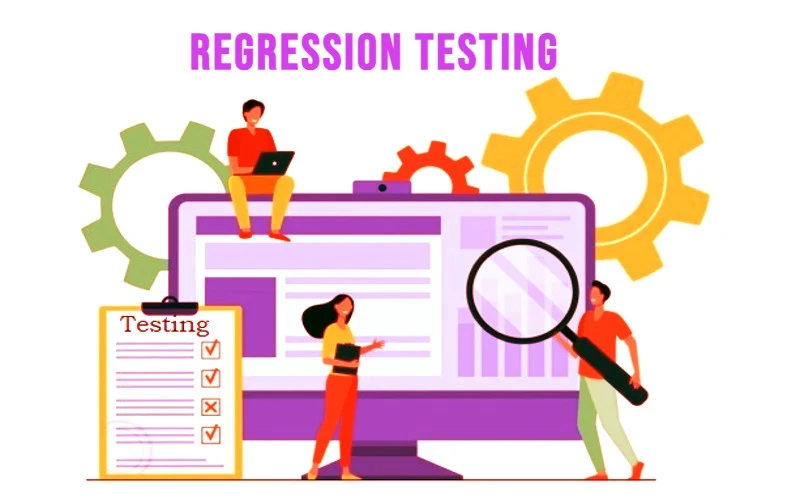Why Regression Testing is So Important?
Regression testing is a fundamental software testing process to verify the new build whenever any code commit takes place.
Regression testing is like a safety net—protecting existing functionality, instilling confidence, and ensuring smooth software transitions. Its importance cannot be overstated in today’s dynamic development landscape.
Regression testing offers valuable benefits to enterprises. It acts as a safety net, catching any unintended issues that might arise due to modifications. Regression testing helps maintain software stability, prevents regression of known issues, and ensures smooth functionality with each update.
In this article, we will highlight eight invaluable advantages of regression testing. So, let's get started!
What is Regression Testing?
Regression testing is a crucial aspect of software development. It ensures that recent code changes do not negatively impact existing features.
Whenever developers make changes—whether adding new features, fixing bugs, or improving existing functionality—they run the risk of unintentionally affecting other parts of the application. Regression testing involves retesting the software after modifications to confirm that previously developed and tested features still perform correctly. By doing so, it acts as a safety net, maintaining software stability and consistency throughout its development cycle.
Imagine an e-commerce website where a new feature inadvertently breaks the checkout process. Regression testing prevents such issues, avoiding lost sales and unhappy customers.
For example, Tesla’s website generates billions of dollars in annual revenue. To ensure its reliability, Tesla’s developers perform regression tests after every change. These tests verify that updates haven’t introduced unintended issues, allowing the website to function smoothly and maintain its integrity.
Regression tests can be automated, making them efficient and repeatable. Automated tests quickly validate whether fixed bugs or enhancements have reintroduced any issues. This efficiency allows developers to focus on new features while maintaining confidence in the existing functionality.
When to Perform Regression Testing: After every code change, whether it’s adding new features, fixing bugs, or improving existing functionality. By doing so, developers catch unintended issues early, ensuring consistent performance and user satisfaction.
Finally, regression testing is the safety harness that keeps software steady as it evolves, preventing unexpected glitches and ensuring a reliable user experience.
8 Advantages of Regression Testing
Regression testing is critical whenever the software of an enterprise is updated to ensure that the new changes won’t affect the existing code. It chiefly involves executing various test cases to ensure that the existing functionality of the software is not affected in any way. However, that can be time-consuming, costly, and not fully accurate when done manually. Fortunately, regression automation is possible with many platforms allowing the features.
Regression testing automation can revolutionize the process and offers valuable benefits to enterprises, including:
1. Reduces Menial Tasks
Regression testing automation means that the software quality assurance (QA) team will no longer be doing repetitive and menial tasks. The monotonous task of continually running tests can now be done automatically.
2. Perfect for Complex Programs
Enterprise Resource Planning (ERP) software is frequently updated, and with every update, they grow increasingly more complex. That can make regression testing more challenging when it is done manually.
3. Cost-effective
Regression testing automation platform costs are much lesser than manual testing costs (in terms of money, effort, and time). Regression testing is thus a cost-effective choice, and investment in a testing platform often pays for itself in handsome savings.
4. Greater Coverage
In conventional manual regression testing, one must rely on personal judgment for deciding which aspects of the software to focus on, especially where software a complex. However, automation removes the need for any such arbitrary judgments. One can conduct automated regression tests.
5. Faster Process
Automatic regression testing is several times faster than manual testing. Further, it can run the tests throughout the day, unlike human testers who must work in shifts. That helps reduce the period required for software installation and updation in a dramatic manner.
6. No Trouble in Scaling Up
Manual scaling must be scaled up as the software grows more complex or finds a wider application in your enterprise. No such problem with automated regression testing, as the automatic testing platforms are built to support large-scale enterprises.
7. No Chance of Human Errors
The possibility of human errors is the biggest drawback of manual regression testing. A single mistake by a tester can have disastrous results for the enterprise - affecting the operations or use experience (depending on the software in question). No matter how well one trains the trainers, the possibility of human errors can never be entirely eliminated because of the strenuous and monotonous nature of work. Automated regression testing can help avoid any such human errors.
8. AI Empowerment
Artificial Intelligence (AI) empowers regression testing to newer heights. AI-based testing automation platforms can also create test cases depending on the updates and changes in the software. Such platforms can dramatically reduce the need for coding knowledge in regression testing.
The Bottom Line
Regression testing offers several benefits in software development. The above list of benefits of regression testing is by no means exhaustive. By verifying that recent code changes do not negatively impact existing features, regression testing ensures the overall quality and reliability of the software.
Find the best testing automation platform for regression testing bringing down the risk of potential downtime by 90 percent. It also boasts of over thirty thousand automated test cases for over 14 ERPs and makes testing ten times faster. The company offers unparallel service through its state-of-the-art and AI-empowered platform.

